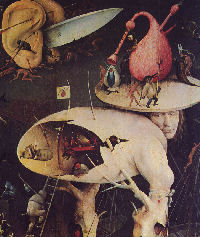
Are GM (genetically modified, some prefer "GE", genetically engineered) crops and food safe? Reading the mainstream press is probably going to confuse you more than anything else. The reason for this is it's extremely hard to tell who's telling "the truth". However, use of the Internet (and a few books that you can purchase through the Internet) can help you to see through the half-truths and distortions frequently used by proponents of GM crops and food. People who oppose the introduction of GM crops and food can, of course, resort to the same kind of tactics, so it's really up to the individual to look at the evidence and come to his or her own conclusion. The information is freely available on the Internet, all I do is give a few guidelines below to help you find it.
 As I write (late June 2008), Australia is slowly trying to make up its collective mind about whether to allow the introduction of GM crops. Victoria and New South Wales, for example, have ended their moratorium on the planting of GM crops, and WA is maintaining its moratorium, though a debate on whether to extend it or not is now raging in that state. A friend of mine sent me an article from the Farm Weekly and I would like to use this article as an example of pro-GM writing. I would like to show how the writer uses half-truths and distortions to make his points, and how more detailed knowledge about much of the material in the article, allowing the reader to see 'where the writer is coming from,' is quite easily available on the Internet. Since information is democracy's oxygen, it would be a good idea perhaps if Australians take a deep breath before they finally decide on whether they really want GM crops and food or not.
As I write (late June 2008), Australia is slowly trying to make up its collective mind about whether to allow the introduction of GM crops. Victoria and New South Wales, for example, have ended their moratorium on the planting of GM crops, and WA is maintaining its moratorium, though a debate on whether to extend it or not is now raging in that state. A friend of mine sent me an article from the Farm Weekly and I would like to use this article as an example of pro-GM writing. I would like to show how the writer uses half-truths and distortions to make his points, and how more detailed knowledge about much of the material in the article, allowing the reader to see 'where the writer is coming from,' is quite easily available on the Internet. Since information is democracy's oxygen, it would be a good idea perhaps if Australians take a deep breath before they finally decide on whether they really want GM crops and food or not.
The writer, Peter Lee, uses quotations from Shakespeare to back up some of the arguments he makes in the article. That's fine. I know almost nothing about Shakespeare, but I think this shows that Peter is a well-educated person of the English-speaking world. He especially gives the Shakespearean quote "There is nothing either good or bad, but thinking makes it so." just before he launches into his main argument about "whether WA farmers should be allowed to grow GM canola." Let's have a look at Peter's argument.
Just after the Shakespeare quote, Peter says, "There is no scientific proof that GM foods are dangerous, yet an entire industry has been built up world-wide to frighten (well-fed!) people into believing that such foods are unnatural and unsafe."

Yes, there is no scientific proof concerning whether GM foods are safe or not because the entire biotechnology industry has quite adamantly refused to do any conclusive testing on GM foods.

Yes, there is no scientific proof concerning whether GM foods are safe or not because the entire biotechnology industry has quite adamantly refused to do any conclusive testing on GM foods. Several preliminary and rigorous experiments by independent researchers on the feeding of GM foods to rats (e.g. by Arpad Pusztai and Irina Ermakova) have shown that there may be severe health impacts from the consumption of GM foods, but the biotechnology industry, whilst rebutting these experimental results has not followed up on them. The researchers who have carried out these experiments have complained of being forced to desist, through a cutting off of their funding, sudden firing, or retirement (in the case of Arpad Pusztai). The relevant books, see below, which are easily available from Internet bookstores, documentaries, such as the YouTube broadcasts here and here and The Genetic Conspiracy, and websites, e.g. ISIS (www.i-sis.org.uk), whose director is Dr Mae Wan Ho, note several such examples. What is frightening people is what appears to be a refusal to carry out rigorous testing on the human health effects of GM foods.
A small sample of useful books:
- Jeffrey M. Smith, Genetic Roulette: The Documented Health Risks of Genetically Engineered Foods
- Jeffrey M. Smith, Seeds of Deception: Exposing Industry and Government Lies About the Safety of the Genetically Engineered Foods You're Eating
- Mae-Wan Ho, Genetic Engineering Dream or Nightmare?: The Brave New World of Science and Business
Peter goes on to set up an analogy on possible similarities in the contrasts between organic and conventionally-grown food on the one hand and between non-GM food (essentially the same thing as conventionally-grown food) and GM food on the other. However, we need to look at what Peter says in a little detail to see whether his analogy is actually valid or not.
Peter says, "It is interesting to compare the attitude of these [anti-GM] believers with those who have a similar belief about organic foods and have convinced themselves that non-organic food is either unsafe or unpalatable, even though science is unable to support their beliefs."
 Anyone as apparently ill-informed on agriculture as this really should not be writing a column as an "agripolitical analyst" in a farm-related newspaper. I can only suggest that Peter go to Wikipedia and enter the keywords "(Sir) Albert Howard". He will find information on Sir Albert Howard's 1940 book, An Agricultural Testament, and Lady Eve Balfour's The Living Soil. These contain information on comparative studies on the effects of eating organic food and conventionally-grown (using chemical fertilizers and pesticides) food on people. This is over half a century ago, when food, water, soil and air were nowhere near as polluted with chemicals as they are now. These books are available at no cost as electronic editions on the Internet1. I recommend anyone who is interested in food issues read them.
Anyone as apparently ill-informed on agriculture as this really should not be writing a column as an "agripolitical analyst" in a farm-related newspaper. I can only suggest that Peter go to Wikipedia and enter the keywords "(Sir) Albert Howard". He will find information on Sir Albert Howard's 1940 book, An Agricultural Testament, and Lady Eve Balfour's The Living Soil. These contain information on comparative studies on the effects of eating organic food and conventionally-grown (using chemical fertilizers and pesticides) food on people. This is over half a century ago, when food, water, soil and air were nowhere near as polluted with chemicals as they are now. These books are available at no cost as electronic editions on the Internet1. I recommend anyone who is interested in food issues read them.

I was told … that GM canola will not help Japanese children's atopy (skin allergy) problems. Only when food is cooked with non-GM canola is the atopy relieved. Because the scientific tests have not been carried out, we have no way of knowing why this is, …

Closer to home, I recently visited Caralyn Lagrange, who does wonderful organic gardening near Perth, WA. Caralyn came to organic farming through breast cancer as a viable way to get good chemical-free nutrition. Her book "Gardening and Eating for Living" is a little treasure, and you can find out more about it on her website. You see, most people seem to be able to eat conventionally grown food with no apparent problems, but some people are more sensitive to the chemicals used to produce the food. I've heard of people in Japan whose lips become numb as soon as they put chemically-grown vegetables in their mouths and thus cannot survive without very conscientiously grown organic food.
 With respect to the non-GM/GM canola problem, I was told by a friend who was a member of the Japanese consumer group representatives mission to WA, mentioned below, that GM canola will not help Japanese children's atopy (skin allergy) problems. Only when food is cooked with non-GM canola is the atopy relieved. Because the scientific tests have not been carried out, we have no way of knowing why this is, but we may conjecture, for example, that it is the different, possibly novel, protein content in the GM canola that is the culprit. Perhaps we'll know if anyone is ever allowed to do the tests. Of course, organic canola would be even better than the conventionally-grown non-GM canola, but it is not available in the amounts necessary. If WA canola farmers want to try their hand at producing organic canola for the Japanese market, I'm sure they will be welcomed with open arms.
With respect to the non-GM/GM canola problem, I was told by a friend who was a member of the Japanese consumer group representatives mission to WA, mentioned below, that GM canola will not help Japanese children's atopy (skin allergy) problems. Only when food is cooked with non-GM canola is the atopy relieved. Because the scientific tests have not been carried out, we have no way of knowing why this is, but we may conjecture, for example, that it is the different, possibly novel, protein content in the GM canola that is the culprit. Perhaps we'll know if anyone is ever allowed to do the tests. Of course, organic canola would be even better than the conventionally-grown non-GM canola, but it is not available in the amounts necessary. If WA canola farmers want to try their hand at producing organic canola for the Japanese market, I'm sure they will be welcomed with open arms.
Peter continues, "But organic supporters have not tried to ban the production of non-organic food, merely wishing to ensure that they have access to sufficient quantities of the food of their choice."
Yes, that's because organic farming and conventional farming has managed to coexist, for example by taking precautions (overwhelmingly on the side of the organic farmer) against the chemicals polluting organic farming lands. The seeds used in both types of farming might be the same, and there is usually no big problem with pollution from wind-blown or insect-carried pollen.
Now let's take a look at the GM/non-GM issue. The point is that the novel genes from the GM plant will pollute the non-GM varieties. When the farmer next door plants a GM crop (canola, soybeans, maize, and so on) next to your field where you have planted a non-GM variety of the same crop, your produce will almost certainly be polluted with the GM variety genes. There are two major problems with this. Firstly, depending on who you are planning to sell the produce to, the level of GM pollution in your produce may become unacceptable to the buyer. If you are trying to export non-GM canola to a Japanese consumer group, NO level of GM contamination is acceptable. 0%. At this point you have lost your market. If you are an organic farmer, there is no way, once the GM contamination is discovered, that you can sell your produce as organic. In other words, the coexistence of GM and non-GM varieties is extremely problematical. With respect to canola, this fact has already been amply demonstrated in Canada, which has been extensively contaminated with GM canola genes such that it is effectively impossible to grow non-GM canola in Canada now.

 Secondly, that's just how the GM variety seed producing companies want it. In the USA and Canada, non-GM farmers have been ruined by court cases, or the threat of them, from GM seed companies simply because of the contaminated plants that have 'fortuitously' grown on their land. A well-known case is that of Percy Schmeiser, information on whom you can find with a simple web search. The actions of the companies threaten to have the effect of driving out all non-GM growers. Coexistence just doesn't seem to be possible.
Secondly, that's just how the GM variety seed producing companies want it. In the USA and Canada, non-GM farmers have been ruined by court cases, or the threat of them, from GM seed companies simply because of the contaminated plants that have 'fortuitously' grown on their land. A well-known case is that of Percy Schmeiser, information on whom you can find with a simple web search. The actions of the companies threaten to have the effect of driving out all non-GM growers. Coexistence just doesn't seem to be possible.

 In WA, the recommended buffer zone between GM and non-GM canola crops is five meters, which is supposed to be on the non-GM farmer's side of the fence, by the way. You can find references to this on the website of the the Network of Concerned Farmers. Japan's Ministry of Agriculture, Forestry and Fisheries (MAFF) recommends 600 m. Hokkaido, Japan's northernmost island, where concern over the commercial planting of GM crops is higher, the recommended distance is 1200 m, but it is not certain whether this distance will completely prevent contamination (cross-pollination by wind-borne pollen and so on) or not. If you type in the search words "five-metre buffer zone canola" in Google, you will see that one entry says"GM canola pollen has been found up to 26 kilometres from its source." Try putting that buffer zone on the inside of your fence. Five meters is laughable. It also comes with a caveat that the non-GM farmer "is to accept" a 0.9% contamination of his/her crop. You can find this in the pdf file of the Australian Grains Research and Development Corporation report "Delivering Market Choice with GM Canola". Just type the title into Google to find the file. That's not coexistence, that's downright surrender. Surrender to what? What are the GM seed companies trying to achieve? It looks to me like they are trying to achieve nothing less than the total control of all the world's food crop seeds. They appear to be acting in a manner that would give them control of the world's food supply and an everlasting source of income from the sale of the seeds, which must be bought anew each year. This comes courtesy of the legalistic sleight of hand that allows patents on life. If that doesn't send a chill up your spine, nothing ever will.
In WA, the recommended buffer zone between GM and non-GM canola crops is five meters, which is supposed to be on the non-GM farmer's side of the fence, by the way. You can find references to this on the website of the the Network of Concerned Farmers. Japan's Ministry of Agriculture, Forestry and Fisheries (MAFF) recommends 600 m. Hokkaido, Japan's northernmost island, where concern over the commercial planting of GM crops is higher, the recommended distance is 1200 m, but it is not certain whether this distance will completely prevent contamination (cross-pollination by wind-borne pollen and so on) or not. If you type in the search words "five-metre buffer zone canola" in Google, you will see that one entry says"GM canola pollen has been found up to 26 kilometres from its source." Try putting that buffer zone on the inside of your fence. Five meters is laughable. It also comes with a caveat that the non-GM farmer "is to accept" a 0.9% contamination of his/her crop. You can find this in the pdf file of the Australian Grains Research and Development Corporation report "Delivering Market Choice with GM Canola". Just type the title into Google to find the file. That's not coexistence, that's downright surrender. Surrender to what? What are the GM seed companies trying to achieve? It looks to me like they are trying to achieve nothing less than the total control of all the world's food crop seeds. They appear to be acting in a manner that would give them control of the world's food supply and an everlasting source of income from the sale of the seeds, which must be bought anew each year. This comes courtesy of the legalistic sleight of hand that allows patents on life. If that doesn't send a chill up your spine, nothing ever will.
Peter goes on to say, "More importantly, they are willing to pay extra for it [organic food], with various organizations dedicated to the production of organic food designing codes of practice to describe how this task should be performed."
Yes, people pay more for organic food because under the present economic arrangements organic food is more expensive to produce. Generally speaking, food produced on farms which run a chemical and mechanical system of farming are more efficient in terms of labour. Very few people are producing a lot of food, so relatively the labour costs are low. In organic farming, although cash inputs (chemicals, fuel and so on) are fewer, it is labour-intensive. Given the amounts of money required to live a decent life these days, i.e. wage levels, organic farmers have to charge relatively more for their produce in order to make a living. This accounts for a large proportion of the price differential between organic and conventionally produced food. There are more factors, as you can see here. (This website takes a little while to load, but you will also see here that prices of organic food include not only the cost of the food production itself, but also a range of other factors that are not captured in the price of conventionally-grown food).
However, consumers of organic food are willing to pay more because they feel that cheap food might actually turn out to be more expensive in terms of health effects. Paying a little more for food that is more likely to keep you in good health may eventually be saving you steep hospital bills.

… if the price of oil continues to rise … this may eventually result in people paying the same or less for organic produce.

Now, what will happen if the price of oil continues to rise? Chemicals are mostly produced from oil, natural gas, or coal (fossil energy resources), so the economic advantage of the cheap part of the chemical-mechanical farm that makes it so efficient (relatively cheap fuels, fertilizers and other chemicals) will be eroded. This may eventually result in people paying the same or less for organic produce.
Peter continues, "They have a regime of production, inspection and accreditation in force that allows supporters of this type of food to shop with confidence and to obtain the type of product they desire."
All very well and good and protects consumers' right to choose what they eat.
Peter then says, "It seems an eminently practical and workable system that should provide a methodology that would allow the anti-GM supporters to to obtain their needs from growers who wish to supply such produce."
Not as planned, it won't, as we have already seen above.
Peter then says, "Growers of non-GM crops should be required to prove that their product is as claimed, just as organic producers also carry the onus of proof, a system that works for them because their consumers pay extra."
Peter is implying that consumers of organic food are paying higher prices for their food because of the inspection and accreditation systems necessary to prove that the food is really organic. However, as seen above, that's neither the main reason why organic food is more expensive, nor is it necessarily true that organic food will always be more expensive than conventionally produced food, or GM food for that matter. OK, so perhaps there should be some mechanism for proving that non-GM food is just what it says it is. Who should pay for the testing is something that can be argued over, since there is no system in place now. And maybe the non-GM farmer will end up having to pay for this and will pass the cost on to the consumer, who will have to pay a little more for the food.
Let's look a little closer at the difference between this and the contrast between organic and conventionally grown food. Suppose an organic farmer is growing a crop next door to a conventional farmer. The organic farmer will surely take precautions to see that his/her produce is not affected by the neighbouring farmer, but it might happen. The organic farmer might be extremely annoyed about this, depending on the seriousness of the pollution, and may lose income, but it is extremely rare that any irreversible permanent damage would be done. The organic farmer might try to sue the chemical farmer for damage, but I cannot find on the Internet any examples of this ever having occurred. Can you? Anyway, now we're not talking so much about proving that organic produce is organic as whose liability it is if pollution occurs and the farmer loses income because of that.
 Peter seems to be confident that GM and non-GM crops can coexist, just as organic and conventional farming manage to coexist today. The Canadian experience shows that in the case of canola this is very doubtful. So, rather than this being a problem of who pays for testing to prove that a harvested crop is what it is said to be, since pollution is almost certain to occur (according to the GRDC, the non-GM farmer is supposed to accept 0.5% pollution of seed and 0.9% pollution of a non-GM crop anyway), who takes responsibility for the loss of income that results? Thus far, as in the example of Percy Schmeiser and many others in Canada and the USA, far from the company that manufactured the GM seed taking any responsibility for GM pollution, these companies are likely to threaten to sue the non-GM farmer for infringement of patent rights. Slowly, this is now beginning to turn around (Percy Schmeiser did eventually win a court case against Monsanto), but let's look at the nature of GM pollution when compared with the chemical pollution of an organic crop. (All farmers are, of course, concerned about cross-fertilization of crop varieties, but have learned to control it. See, for example, the Seed Savers' Network).
Peter seems to be confident that GM and non-GM crops can coexist, just as organic and conventional farming manage to coexist today. The Canadian experience shows that in the case of canola this is very doubtful. So, rather than this being a problem of who pays for testing to prove that a harvested crop is what it is said to be, since pollution is almost certain to occur (according to the GRDC, the non-GM farmer is supposed to accept 0.5% pollution of seed and 0.9% pollution of a non-GM crop anyway), who takes responsibility for the loss of income that results? Thus far, as in the example of Percy Schmeiser and many others in Canada and the USA, far from the company that manufactured the GM seed taking any responsibility for GM pollution, these companies are likely to threaten to sue the non-GM farmer for infringement of patent rights. Slowly, this is now beginning to turn around (Percy Schmeiser did eventually win a court case against Monsanto), but let's look at the nature of GM pollution when compared with the chemical pollution of an organic crop. (All farmers are, of course, concerned about cross-fertilization of crop varieties, but have learned to control it. See, for example, the Seed Savers' Network).
Once the transgenes (the new genes the biotechnology company has inserted into the DNA of the plant to give it the novel trait) enter the genome (the totality of DNA in the cell nucleus of the plant) of the non-GM plant, how can you get them out again? You cannot, and that means your seed is contaminated with the transgenes; permanent irreversible damage. So if you are a non-GM farmer who has been saving your own seeds for replanting, like Percy Schmeiser was, you might lose decades of work. You cannot plant those polluted seeds because you would be infringing a patent right if you did. The GM seed manufacturing companies do not seem to be seriously interested in preventing this problem, as we have seen with the five-metre canola buffer zone above. There's little doubt that after a number of years under a system like this only GM crops will be planted. That appears to be what the seed companies want.
Peter goes on to say, "This is where the proposal could fail, because those who believe that GM is unsafe won't pay extra for non-GM food, preferring legislation to prohibit the production of the GM variety, which allows them to get their non-GM fix on the cheap."
Quite wrong; they will pay. They are already paying because the price of oil is rising. And anyway, why should they have to pay just because the biotechnology industry wants to sell its seeds? After what you have read above, is it any surprise that some people feel they need legislation to protect their farming, their food, and their way of life?

 Here, the argument shifts a little to mention the visit by a group of Japanese consumer group representatives. Peter says, "The Conservation Council has again sponsored a visit from an anti-GM group from Japan, a so-called consumer group that admits it only accounts for 4000t of WA canola per year and represents only a handful of Japan's 125 million people."
Here, the argument shifts a little to mention the visit by a group of Japanese consumer group representatives. Peter says, "The Conservation Council has again sponsored a visit from an anti-GM group from Japan, a so-called consumer group that admits it only accounts for 4000t of WA canola per year and represents only a handful of Japan's 125 million people."
The Conservation Council of Western Australia did not 'sponsor' the visit of the group. They 'hosted' it. Perhaps Peter missed the substantial articles mentioning the group's visit and participation in the forum at Williams (June 13) on pages 4, 5, and 6 in the June 19 edition of Farm Weekly. The consumers' group representatives came of their own accord2 to ask the government and farmers of WA to extend the moratorium so that they could continue to buy non-GM canola from WA, perhaps soon to be the only place where they can obtain it in sufficient quantities.

These co-ops and organic food suppliers (representing 2.9 million Japanese consumers) do what they do to help consumers obtain the safe and nutritious food they want to eat instead of having to put up with being force-fed the chemically-produced and GM food that they do not want to eat.

Why does Peter say "a so-called consumer group"? I cannot imagine what is meant by this. They are consumer group representatives whose organizations represent 2.9 million members. These co-ops and organic food suppliers do what they do to help consumers obtain the safe and nutritious food they want to eat instead of having to put up with being force-fed the chemically-produced and GM food that they do not want to eat. The organizations represented were: The NO! GMO Campaign (closely associated with the Consumers' Union of Japan), the Green Co-op, the Kirari Cooperative Union Association, The Association to Preserve the Earth (Daichi wo Mamoru Kai), and the well-known Seikatsu Club. Unfortunately, most of the websites are in Japanese, but you will be able to see that these organizations, as well as working to provide safe and nutritious food to their members, are also social movements which work for grassroots democracy, assistance for handicapped and other socially disadvantaged people, and carry out other socially beneficial activities. Certainly not fanatics, and certainly not fanatical organizations posing as consumer groups.
Then Peter says, "They also acknowledged that most of the canola consumed in Japan was GM canola from Canada, yet they still claimed that 70pc of Japanese oppose the use of GM food!"

GM seed companies and governments are effectively cooperating to force-feed you GM food without your knowledge.

Sounds like a contradiction doesn't it? Public opinion polls show that around 60% to 75% of Japanese people do not want to eat GM foods. But the reason that they are buying and using canola oil produced from Canadian GM canola is that they don't have a choice. The Japanese food labelling system is very similar to the Australian one. There's nothing on labels to show that a food product is produced from GM crops. If you want to buy non-GM, then you have to look for the labels that say "non-GM", "GM free" and so on. So a very large number of people are eating GM foods without knowing or being aware that they are doing so. The feeling is that the governments of Australia and Japan have introduced these labelling systems because they know what would happen to purchasing behaviour if foods were labelled accurately. Looks like someone doesn't want you to enjoy your right of consumer choice. GM seed companies and governments are effectively cooperating to force-feed you GM food without your knowledge. By the time we find out what the human health problems are with these foods, it will be far, far too late to anything about it. Who will benefit from that?
Peter goes on to say, "The really astounding thing about the current debate is that so many seemingly rational people actually take the anti-GM fanatics seriously."
Apart from the implication that the above-mentioned consumer group representatives are "fanatics", given the potential for information democracy provided by the Internet, the really astounding thing is that pro-GM analysts like this can get articles printed in the newspaper and actually expect that some poor fools will believe them!
Finally, Peter says, "If Shakespeare was given the last word, he would probably observe that the dispute is 'much ado about nothing'."
It is quite clearly not "much ado about nothing" - it's a lot of fuss about controlling the world's food supply (and all that that implies). Perhaps more appropriately we should say, "There's no smoke without fire." If people are protesting about something, then it is just as well that we take pains to see if they have reasonable grounds for doing so. If Peter wants to refute their arguments, under our current social system, where freedom of speech is respected, he is at liberty to do so. However, if he uses terms like 'fanatics' and implicates that these people only hold their views through some form of irrational 'belief', or because their 'thinking made it so,' I would like to suggest that his readers take a long hard look at the evidence for and against before they swallow his arguments whole.
Footnotes
1. ↑ I couldn't locate an online version of The Living Soil although Wikipedia implies that one is to be found on www.soilandhealth.org. To order printed version, visit the Soil Association.
2. ↑ See, also, comments posted by two of the visitors The media's responsibility and duty to report the truth about GM and Only 4000 tonnes canola per year, but ZERO contamination and a comment by another Japanese consumer Monsanto makes coexistence between GM and non-GM impossible.

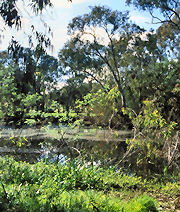
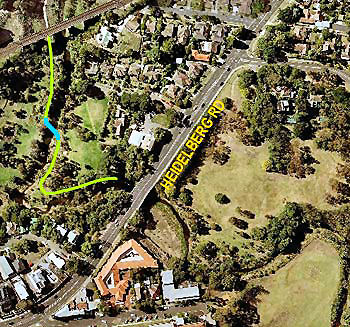
 In an effort to silence residents with difficult questions, Western Australia's Cockburn Council routinely limits question time and threatens residents who defy these limits with AU$1,000 fines. The Mayor, Stephen Lee, is now on extended leave after the Crime Commission had found him guilty of misconduct for having accepted an undeclared election campaign donation of AU$43,000 from the Singapore-controlled developer
In an effort to silence residents with difficult questions, Western Australia's Cockburn Council routinely limits question time and threatens residents who defy these limits with AU$1,000 fines. The Mayor, Stephen Lee, is now on extended leave after the Crime Commission had found him guilty of misconduct for having accepted an undeclared election campaign donation of AU$43,000 from the Singapore-controlled developer 
 Last week BCC posted the long-anticipated negotiated development approval on their website - it will see the guts ripped out of Yungaba, the last remaining intact 19th century immigration depot left in Australia, leaving only a shell for the public to view from outside a gated community.
Last week BCC posted the long-anticipated negotiated development approval on their website - it will see the guts ripped out of Yungaba, the last remaining intact 19th century immigration depot left in Australia, leaving only a shell for the public to view from outside a gated community.  For his political courage in speaking out against undemocratic, but mainstream media and government endorsed, growth, actor, Geoffrey Rush deserves particular historic recognition from Australians. He launched a new website: Marvellous Melbourne at https://marvellousmelbourne.org. Candobetter.net editor 12 January 2017: Unfortunately, eight years later it is no longer maintained, so we have removed the link. Candobetter.net remains one of its memorials. However the problem those optimistic protesters set out to solve has grown every year into a behemoth that threatens many of our institutions and certainly our way of life, all over Australia.
For his political courage in speaking out against undemocratic, but mainstream media and government endorsed, growth, actor, Geoffrey Rush deserves particular historic recognition from Australians. He launched a new website: Marvellous Melbourne at https://marvellousmelbourne.org. Candobetter.net editor 12 January 2017: Unfortunately, eight years later it is no longer maintained, so we have removed the link. Candobetter.net remains one of its memorials. However the problem those optimistic protesters set out to solve has grown every year into a behemoth that threatens many of our institutions and certainly our way of life, all over Australia. 
 One of the biggest dilemmas for environmental realists is striking the right balance between the potential infringement of human rights required to power down to a more sustainable society on one hand, and the inevitable threat to human rights if we don't take action now. Let's call this the human rights dilemma. One solution is simply to deny the relevance of the coming environmental collapse by idealising a variant form of cornucopia, believing everything would be okay if we just wrested power from the corporate-military elite and brought about a new world order founded on the principles of liberty, fraternity and egalitarianism, extending the ideals of the French revolution to all 6.5 billion citizens alive today and making room for the 9 billion plus expected to grace our humble planet by 2050. Wouldn't it be wonderful if billions more could enjoy the North American way of life with sprawling verdant suburbs, neat bungalows with double garages and private swimming pools populated by shiny happy citizens. Sadly such a reality is just a fantasy promoted by soap operas, incessant but often subtle advertising and peer pressure, but it's the ideal to which billions of our fellow world citizens aspire. The endless, but usually fruitless, pursuit of consumertopia is, as amply documented in Oliver James' excellent book Affluenza, the cause of much distress. Many teenagers in affluent countries acquire a deep sense of inferiority because they lack the kind of consumer gadgets as their peers have or because they fail to emulate the cooldom and aesthetic perfection of media role models. Worse still the exponential rise in aggregate consumption by our species is ultimately suicidal, not just for indviduals but the vast majority of our fellow human beings. When nature begins to take its course, with its periodic natural distasters affecting ever greater numbers of people, you can bet the poorest and most vulnerable will always be the first to go.
One of the biggest dilemmas for environmental realists is striking the right balance between the potential infringement of human rights required to power down to a more sustainable society on one hand, and the inevitable threat to human rights if we don't take action now. Let's call this the human rights dilemma. One solution is simply to deny the relevance of the coming environmental collapse by idealising a variant form of cornucopia, believing everything would be okay if we just wrested power from the corporate-military elite and brought about a new world order founded on the principles of liberty, fraternity and egalitarianism, extending the ideals of the French revolution to all 6.5 billion citizens alive today and making room for the 9 billion plus expected to grace our humble planet by 2050. Wouldn't it be wonderful if billions more could enjoy the North American way of life with sprawling verdant suburbs, neat bungalows with double garages and private swimming pools populated by shiny happy citizens. Sadly such a reality is just a fantasy promoted by soap operas, incessant but often subtle advertising and peer pressure, but it's the ideal to which billions of our fellow world citizens aspire. The endless, but usually fruitless, pursuit of consumertopia is, as amply documented in Oliver James' excellent book Affluenza, the cause of much distress. Many teenagers in affluent countries acquire a deep sense of inferiority because they lack the kind of consumer gadgets as their peers have or because they fail to emulate the cooldom and aesthetic perfection of media role models. Worse still the exponential rise in aggregate consumption by our species is ultimately suicidal, not just for indviduals but the vast majority of our fellow human beings. When nature begins to take its course, with its periodic natural distasters affecting ever greater numbers of people, you can bet the poorest and most vulnerable will always be the first to go. Tim Murray
Tim Murray

 Knowing that I have a little connection with the Karen people, today
Knowing that I have a little connection with the Karen people, today 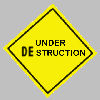 Word is that Melbourne is getting its 1 million more ten years early and that the Vic Government is in a panic because it has no idea how many permanent new guests have taken up its foolhardy invitations to come and stay. Who the hell is responsible?
Word is that Melbourne is getting its 1 million more ten years early and that the Vic Government is in a panic because it has no idea how many permanent new guests have taken up its foolhardy invitations to come and stay. Who the hell is responsible?
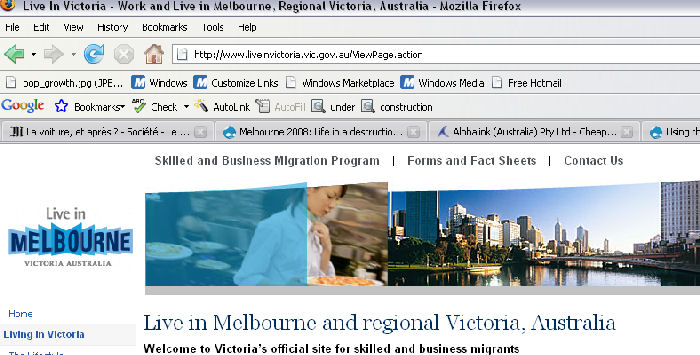
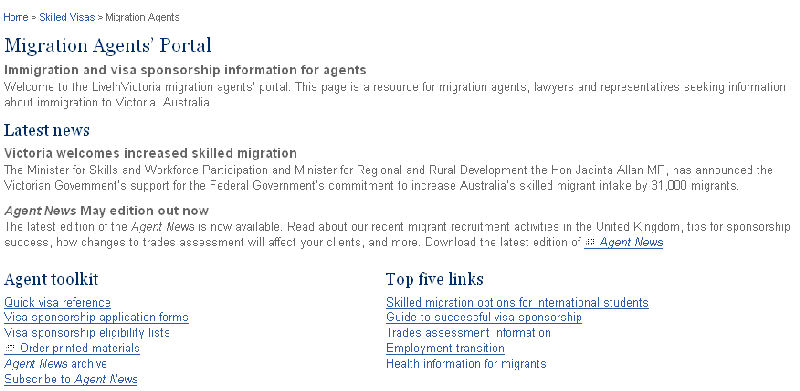
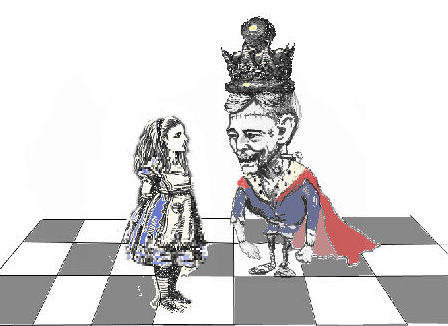
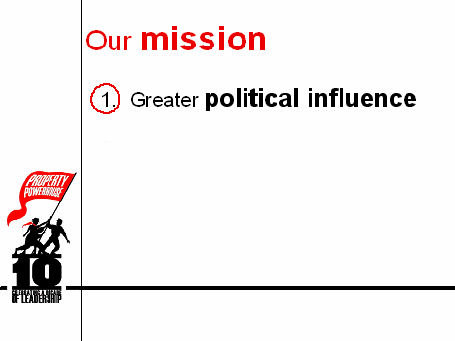

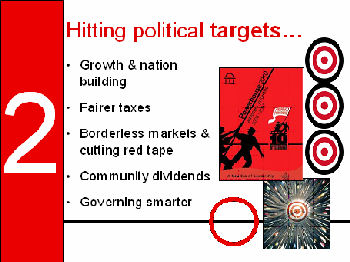
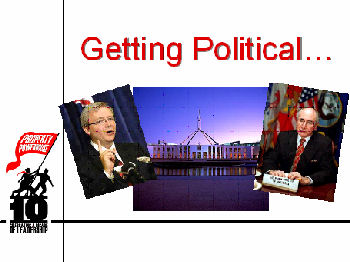

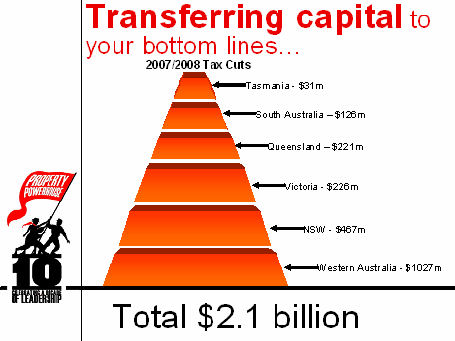
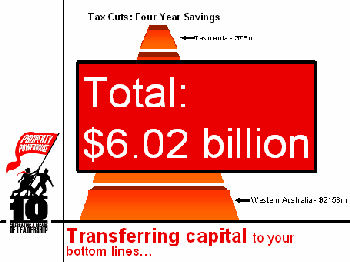




 As I write (late June 2008), Australia is slowly trying to make up its collective mind about whether to allow the introduction of GM crops. Victoria and New South Wales, for example, have ended their moratorium on the planting of GM crops, and WA is maintaining its moratorium, though a debate on whether to extend it or not is now raging in that state. A friend of mine sent me an article from the
As I write (late June 2008), Australia is slowly trying to make up its collective mind about whether to allow the introduction of GM crops. Victoria and New South Wales, for example, have ended their moratorium on the planting of GM crops, and WA is maintaining its moratorium, though a debate on whether to extend it or not is now raging in that state. A friend of mine sent me an article from the  Anyone as apparently ill-informed on agriculture as this really should not be writing a column as an "agripolitical analyst" in a farm-related newspaper. I can only suggest that Peter go to Wikipedia and enter the keywords "(Sir) Albert Howard". He will find information on Sir Albert Howard's 1940 book,
Anyone as apparently ill-informed on agriculture as this really should not be writing a column as an "agripolitical analyst" in a farm-related newspaper. I can only suggest that Peter go to Wikipedia and enter the keywords "(Sir) Albert Howard". He will find information on Sir Albert Howard's 1940 book, 

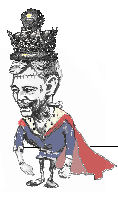

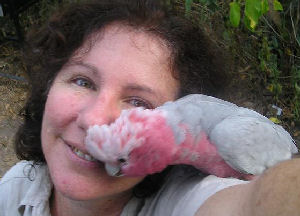
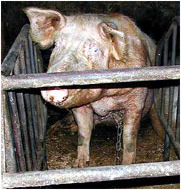 Anglo-capitalism is a system born of dispossession and one which has industrialised cruelty to humans and animals on a massive, constantly worsening scale. (See
Anglo-capitalism is a system born of dispossession and one which has industrialised cruelty to humans and animals on a massive, constantly worsening scale. (See 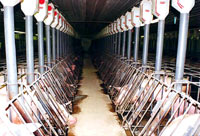

Recent comments